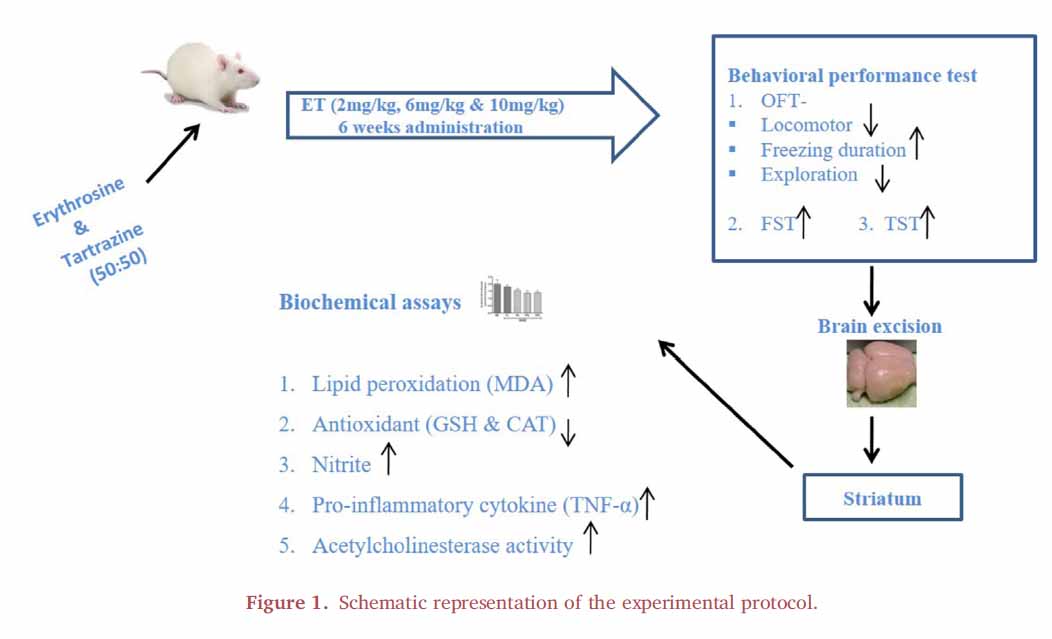Wopara, Adebayo, Umoren, … Wodo. Heliyon, 7. e08454. e-collection, 21 Nov.
Don’t let the complex nature of the picture below (or the title above) distress you — what all the fancy words mean is that this study shows that the two food dyes tartrazine (Yellow 5) and erythrosine (Red 3) are really really bad for you.
In this study, rats were fed some food dye, equal parts Yellow 5 and Red 3, which they called “ET” … as in Erythrosine (Red 3) and Tartrazine (Yellow 5). The results were as follows:
- Neurobehavioral functions decreased significantly.
- Locomotion and exploration decreased (apparently because freezing behavior increased)
- Anxiety increased
- Depression increased
- A whole bunch of neurotransmitters and other chemicals like tumor necrosis factor-alpha were out of whack — either too much, or too little.
- The part of the brain called the striatum (it’s in the middle when you look at a picture of a brain) showed damage.
- The longer they continued to feed these rats the food dye, the more their neuropsychiatric symptoms such as anxiety and depression increased.
- Inflammatory mechanisms were also provoked by the food dyes.
- The authors suggest over time there could be apoptosis (death) in the striatum and serious neurodegeneration.
They want to do more studies on #9 above. That may be very interesting for them, but as a parent trying to raise children surrounded by these food dyes in all the grocery aisles, isn’t it time to just say “enough?”
























